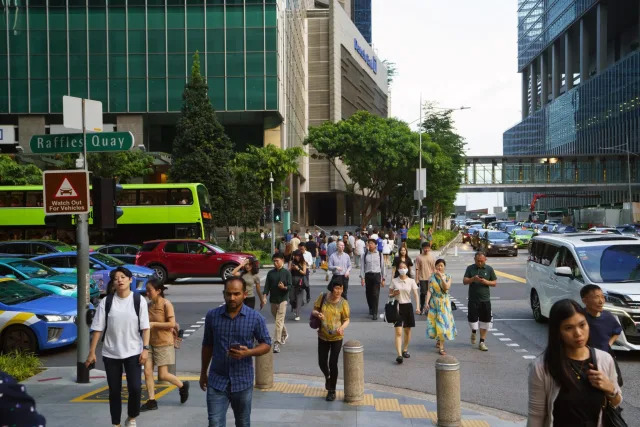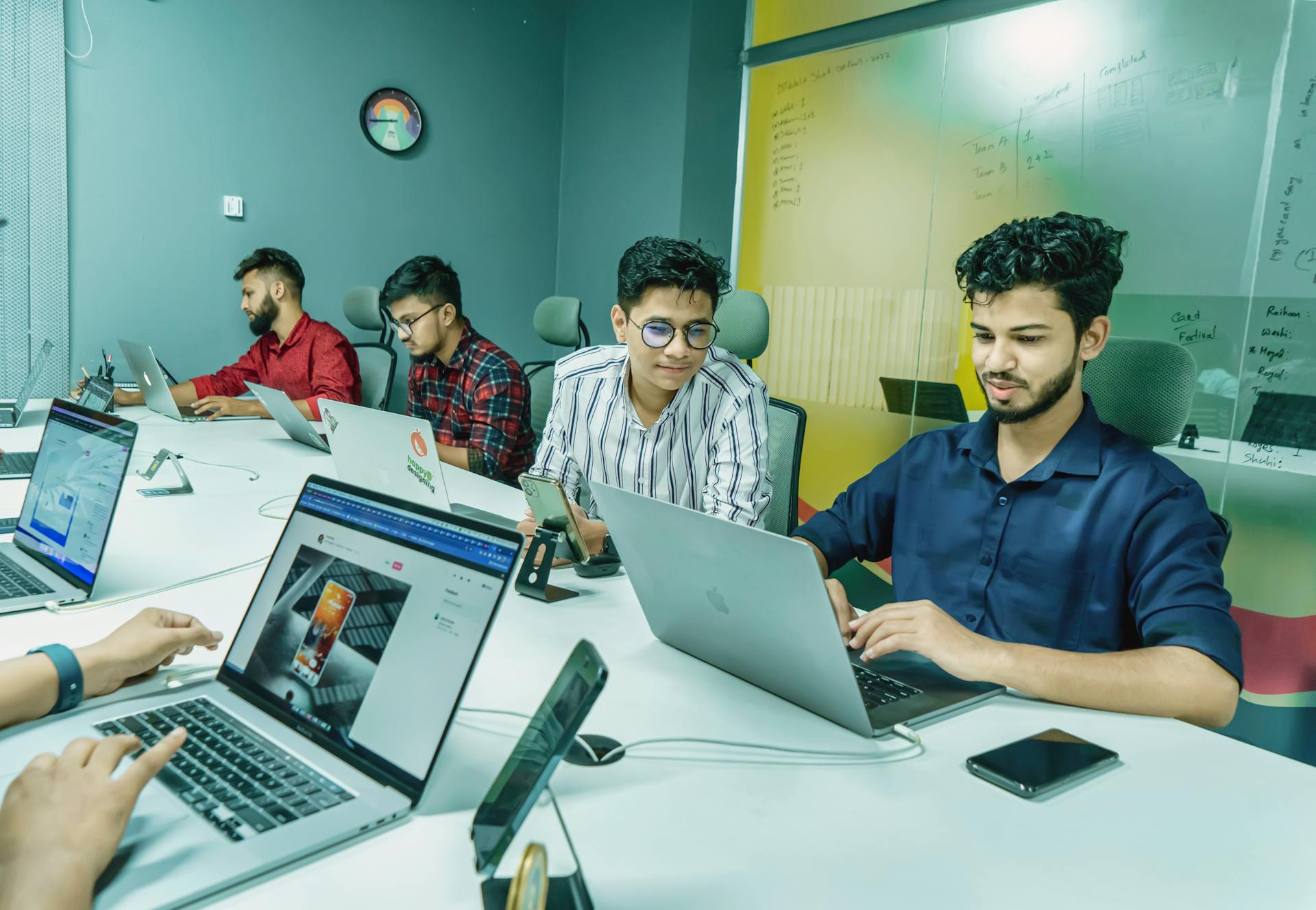Singapore, India working to upgrade ties to comprehensive strategic partnership
Four MOUs were exchanged on Sept 5, witnessed by PM Lawrence Wong (right) and Indian PM Narendra Modi, who is in the Republic on an official visit. PHOTO: LIANHE ZAOBAO
Anjali Raguraman
Correspondent
Sep 06, 2024
SINGAPORE – India and Singapore have strengthened ties and agreed to elevate their relationship to a comprehensive strategic partnership during Prime Minister Narendra Modi’s official visit to Singapore.
The intent to upgrade ties from the existing strategic partnership was announced in a Facebook post by Prime Minister Lawrence Wong on Sept 5.
“Singapore and India share a deep and enduring friendship built on strong economic and people-to-people ties,” said PM Wong, adding that the move is a timely one.
The countries will be marking 60 years of diplomatic relations and the 10th anniversary of the bilateral strategic partnership in 2025.
A comprehensive strategic partnership will deepen existing areas of cooperation and enable new ones. Australia is the only country with which Singapore has such a partnership. The Republic is also exploring the possibility of ones with Vietnam and France.
Signalling a greater cooperation in various sectors, India and Singapore exchanged agreements earlier in the day to help firms here tap India’s growing semiconductor industry and tighten digital links between the two countries.
They will also step up cooperation in areas such as skills development and healthcare.
Four memorandums of understanding (MOUs) were exchanged at Parliament House, witnessed by both prime ministers.
These were first signed by Singapore and India ministers on the sidelines of
the second edition of the India-Singapore Ministerial Roundtable (ISMR), which was held at Shangri-La Singapore on Aug 26.
Mr Modi, who is in Singapore for two days from Sept 4, earlier received a ceremonial welcome by PM Wong at Parliament House.
Prime Minister Lawrence Wong and Indian Prime Minister Narendra Modi inspect an honour guard on Sept 5. PHOTO: MDDI
Semiconductors
India aims to grow its semiconductor industry and become a global node for semiconductor manufacturing, while players in Singapore’s established ecosystem are looking to enter emerging markets.
The MOU in this area will see both countries support India’s growth plans and facilitate the entry of Singapore companies and supply chains in the Indian market.
It was signed between Singapore’s Ministry of Trade and Industry and India’s Ministry of Electronics and Information Technology.
The partnership includes government-led policy exchanges on ecosystem development, supply chain resilience and workforce development.
Semiconductors and advanced manufacturing were identified as new areas for bilateral collaboration at the second ISMR dialogue between ministers.
Digital technologies
To encourage greater interoperability between Singapore and India’s digital economies, an agreement was inked for digital technologies.
The deal includes the exchange of knowledge and expertise on digital public infrastructure such as digital IDs, payments and data exchange.
The MOU was signed between Singapore’s Ministry of Digital Development and Information and India’s Ministry of Electronics and Information Technology.
This builds on existing cooperation efforts such as the
real-time payment systems linkage between Singapore’s PayNow and India’s Unified Payments Interface launched in February 2023.
The link allows bank customers in Singapore and India to send and receive funds via their bank accounts and e-wallets instantly across the two countries.
Singapore and India banks and companies also pioneered a fully paperless transaction process involving traders, shippers and banks in August 2023. It showcased the digitalisation of cross-border trade financing documentation using the TradeTrust framework.
Both countries are working to update and renew a 2015 agreement on cyber-security cooperation between the Singapore Cyber Emergency Response Team and India’s Computer Emergency Response Team.
Cooperation in education, healthcare
Technical education, alongside training and skills development, was among the areas of collaboration agreed upon between Singapore’s Ministry of Education and India’s Ministry of Skill Development and Entrepreneurship.
The higher education institutes of both countries will cooperate in areas such as reskilling and upskilling of workforces, student and staff exchanges, and the training of teachers. They will also include student internships and faculty industrial attachments.
On the medical front, an MOU was signed between Singapore’s Ministry of Health and India’s Ministry of Health and Family Welfare.
The two countries will strengthen cooperation in healthcare, medical education, research, and human resources development, including in areas such as disease surveillance, maternal and child health, prevention of communicable and non-communicable diseases, and pandemic preparedness.
The four MOUs were exchanged between India’s Minister of External Affairs S. Jaishankar and Singapore’s Foreign Minister Vivian Balakrishnan.
India’s Minister of External Affairs S. Jaishankar (centre, left) and Foreign Minister Vivian Balakrishnan (centre, right) at the exchange of the MOUs. PHOTO: LIANHE ZAOBAO
India as a ‘leading centre of growth’
Both prime ministers met on Sept 5 to discuss India’s potential as a leading centre of growth over the next decade, driven by both social and digital investments across its population, as well as its new economic linkages, Singapore’s Ministry of Foreign Affairs (MFA) said in a statement.
Areas of potential collaboration include cross-border electricity trade and green ammonia supply chains, enhancing cross-border data flows via the finance hub of Gujarat International Finance Tec-City or Gift City, and cooperation in developing industrial parks in India.
Both countries are also looking into an agreement on the bilateral trade of carbon credits.
MFA added that Mr Modi had thanked PM Wong for extending support for India’s candidature as a non-permanent member of the United Nations Security Council for the 2028–2029 term, along with reaffirming Singapore’s continuing support for the country as a permanent member of the reformed council.
During opening remarks at his meeting with PM Wong, Mr Modi revealed that the first Thiruvalluvar Cultural Centre will open in Singapore.
Named after a Tamil poet and philosopher, such centres, first announced by Mr Modi in April, are a way to “enhance the global reputation of the Tamil language”, according to Indian media reports.
As part of his official visit, Mr Modi called on President Tharman Shanmugaratnam and met Senior Minister Lee Hsien Loong and Emeritus Senior Minister Goh Chok Tong. He was hosted to lunch by SM Lee.
He toured the facilities of semiconductor and electronics Singapore-based company AEM with PM Wong, where they were briefed about the company’s role in the global semiconductor value chain, its operations and opportunities for collaborations with India, India’s Ministry of External Affairs said in a statement.
He then met students from Singapore who did internships in India as part of the India Ready Talent Programme, which offers university and polytechnic students overseas internship opportunities in Indian and Singapore companies in India.
Prime Minister Lawrence Wong (left) and Indian Prime Minister Narendra Modi touring the semiconductor facility of Singapore-based company AEM on Sept 5. PHOTO: MDDI
Mr Modi met interns from India’s technical skills institute World Skill Centre, which is in the city of Odisha, who are working in companies here.
He also attended a business roundtable at Shangri-La hosted by the Singapore Business Federation and attended by Deputy Prime Minister and Minister for Trade and Industry Gan Kim Yong, where he interacted with chief executives of leading Singaporean companies.
Encouraging more Singaporeans to get to know India, Mr Tharman said in a Facebook post later on Sept 5 that Singapore-India relations are revving up, “and both countries will be better for it”.
He noted India’s dramatic story of human development, having uplifted hundreds of millions of people over the last decade through everything from better maternal and child health, access to electricity, water and sanitation, and gaining digital identities via which they conduct banking activities – sans middlemen.
“A dramatic story of human development, with more to come,” Mr Tharman wrote.



















